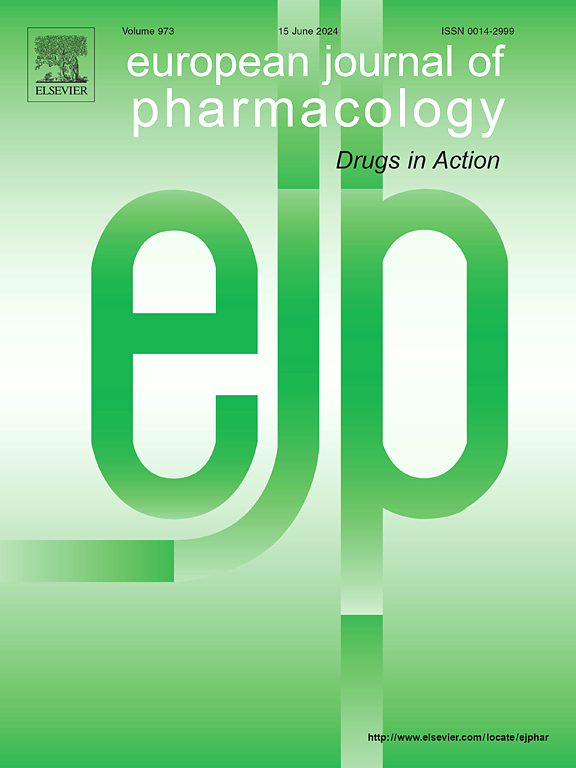西格列汀减少糖尿病前期细胞因子诱导的β细胞凋亡:一项为期六个月的介入研究
IF 4.2
3区 医学
Q1 PHARMACOLOGY & PHARMACY
引用次数: 0
摘要
目的巨噬细胞浸润引发胰岛炎症,激活核因子κB (NF-κB),在糖尿病早期起重要作用。该研究旨在通过测量前驱糖尿病患者血浆Fas、Fas配体(Fas- l)和白细胞介素-1β (IL-1β)水平,评估西格列汀初始治疗如何影响炎症驱动的β细胞凋亡。患者和方法本前瞻性介入研究纳入56例treatment-naïve空腹血糖受损(IFG)患者。参与者接受50毫克西格列汀每日两次或100毫克西格列汀每日一次,为期6个月。在基线和治疗6个月后,用ELISA法测定血浆中炎症凋亡标志物(Fas、Fas- l和IL-1β)水平。采用Wilcoxon符号秩检验评估生物标志物水平的变化。采用分层多元回归分析确定与β细胞功能改善相关的预测因素,并通过HOMA-B进行评估。结果治疗24周后,血浆Fas、Fas- l、IL-1β水平显著降低(p <;0.001)。血糖指标也显著改善(p <;0.001)。回归分析水平是HOMA-B的强负预测因子(R2 = 29.8%, p <;0.001),并且与治疗后HOMA-B的改善仍然显著相关(R2 = 73.8%, p = 0.000), IL-1β也有额外的贡献。结论西格列汀通过减少炎症诱导的β细胞凋亡,对前驱糖尿病有良好的治疗作用。其抑制促凋亡细胞因子的潜力强调了其作为早期治疗方法的作用。本文章由计算机程序翻译,如有差异,请以英文原文为准。
Sitagliptin reduces cytokine-induced β-cell apoptosis in prediabetes: A six-month interventional study
Objective
Islet inflammation, initiated by macrophage infiltration, which activates nuclear factor-kappa B (NF-κB), plays a crucial role in the early stage of diabetes. The study aimed to assess how initial treatment with sitagliptin affects inflammation-driven β-cell apoptosis by measuring plasma levels of Fas, Fas Ligand (Fas-L), and Interleukin-1β (IL-1β) in prediabetes.
Patients and methods
This prospective interventional study included 56 treatment-naïve patients with impaired fasting glucose (IFG). Participants received either 50 mg sitagliptin twice daily or 100 mg sitagliptin once daily for 6 months. Plasma levels of inflammatory apoptotic markers (Fas, Fas-L, and IL-1β) were measured by ELISA at baseline and after 6 months of treatment. Wilcoxon signed-rank test was used to evaluate changes in biomarker levels. Hierarchical multiple regression analysis was conducted to identify predictors associated with improved β-cell function, as assessed by HOMA-B.
Results
After 24 weeks of treatment, significant reductions were observed in plasma levels of Fas, Fas-L, and IL-1β (p < 0.001). Glycemic parameters also improved significantly (p < 0.001). Regression analysis levels were strong negative predictors of HOMA-B (R2 = 29.8 %, p < 0.001) and remained significantly associated with improved HOMA-B after treatment (R2 = 73.8 %, p = 0.000), with additional contribution from IL-1β.
Conclusion
Sitagliptin demonstrates promising therapeutic effects in prediabetes by reducing inflammation-induced β-cell apoptosis. Its potential to suppress pro-apoptotic cytokines underscores its role as an early therapeutic approach.
求助全文
通过发布文献求助,成功后即可免费获取论文全文。
去求助
来源期刊
CiteScore
9.00
自引率
0.00%
发文量
572
审稿时长
34 days
期刊介绍:
The European Journal of Pharmacology publishes research papers covering all aspects of experimental pharmacology with focus on the mechanism of action of structurally identified compounds affecting biological systems.
The scope includes:
Behavioural pharmacology
Neuropharmacology and analgesia
Cardiovascular pharmacology
Pulmonary, gastrointestinal and urogenital pharmacology
Endocrine pharmacology
Immunopharmacology and inflammation
Molecular and cellular pharmacology
Regenerative pharmacology
Biologicals and biotherapeutics
Translational pharmacology
Nutriceutical pharmacology.

 求助内容:
求助内容: 应助结果提醒方式:
应助结果提醒方式:


